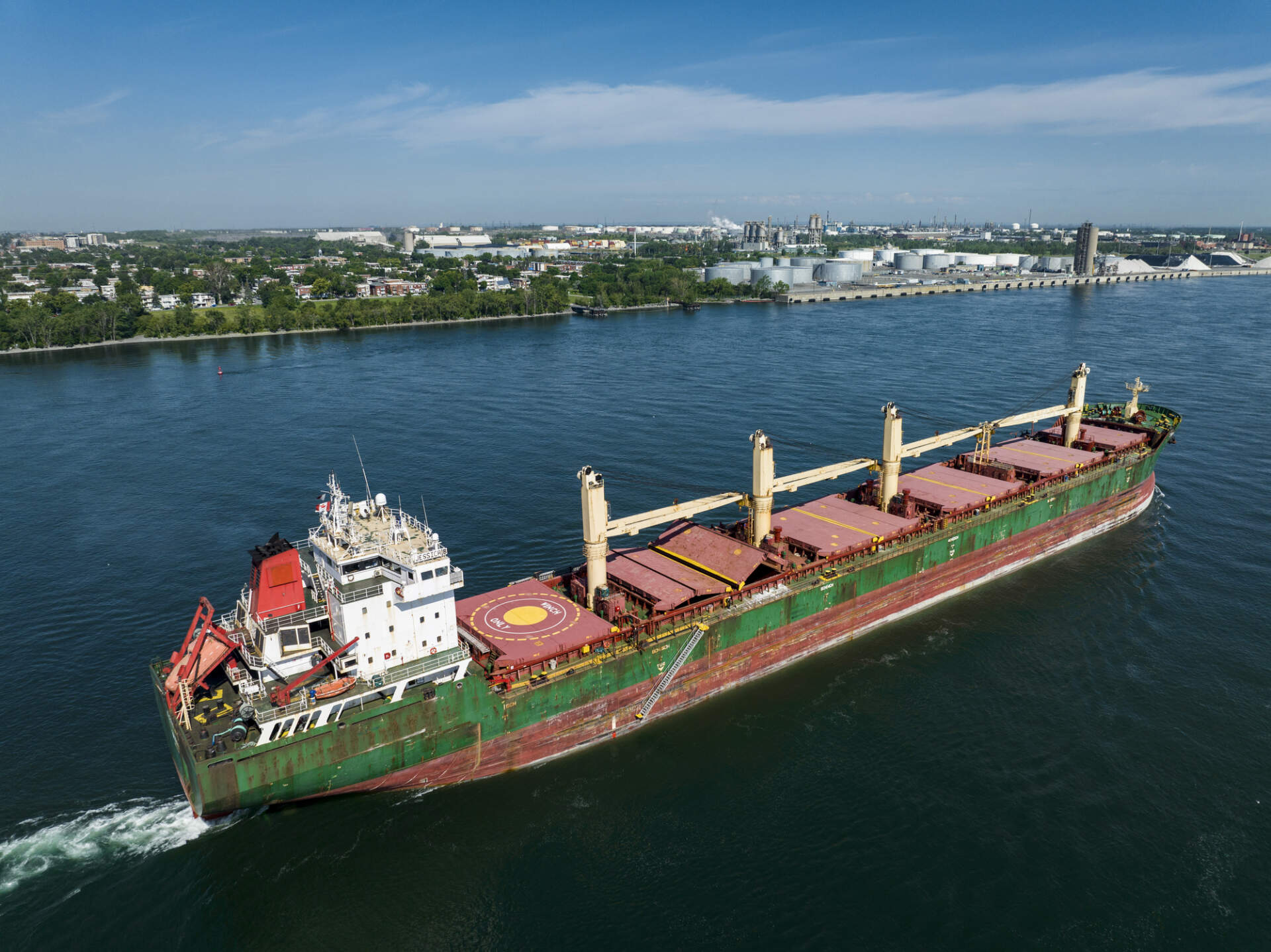
A cargo ship near the Port of Montreal.
Canada’s merchandise trade surplus widened from $949 million in August to $2.0 billion in September according to numbers released on November 7 by Statistics Canada.1 The increase comes as exports climbed 2.7% and imports rose 1.0%.
Exports Up for Third Consecutive Month
Total exports were up 2.7% in September, the third consecutive monthly gain. Cumulatively, exports have increased 11.4% during that period.
The real or volume term increase in exports for September was only 0.4%. Much of the discrepancy between the 2.7% increase and the 0.4% real volume increase is owing to higher prices on energy exports.
Imports Nearly Recover from July Losses
Total merchandise trade imports were up 1.0% in September, the second straight month of increases. Real volume imports were up 1.7% on the month.
Import totals have nearly climbed back to the level they were before decreases were experienced in July.
Trade Surplus with U.S. Widens, Deficit with Rest of World Narrows
Exports to the United States were up 2.6% in September, largely as a result of energy exports. Imports from our neighbour to the south rose 1.7%. As a result, our trade surplus with the U.S. widened from $11 billion to $11.7 billion. It was the third straight month that our surplus expanded.
Meanwhile, Canada’s trade deficit with the rest of the world narrowed from $10.1 billion to $9.6 billion in September. This comes as exports increased 2.9% and imports increased only 0.2%.
Industry Breakdown
Farm, fishing and intermediate food products
Exports $4.92 billion, up 8.1% month over month
Imports $2.52 billion, up 4.8% month over month
Basic and industrial chemical, plastic and rubber products
Exports $3.52 billion, down 2.2% (m/m)
Imports $4.72 billion, down 1.2% (m/m)
Forestry products and building and packaging materials
Exports $4.08 billion, down 0.2% (m/m)
Imports $2.81 billion, up 1.9% (m/m)
Industrial machinery, equipment and parts
Exports $4.35 billion, up 3.4% (m/m)
Imports $7.5 billion, down 3.6% (m/m)
Electronic and electrical equipment and parts
Exports $2.91 billion, down 0.5% (m/m)
Imports $6.98 billion, down 1.3% (m/m)
Consumer goods
Exports $7.46 billion, up 1.2% (m/m)
Imports $12.39, up 1.3% (m/m)
Industry Analysis
Global Conflict and ‘Friendshoring’
Conflict around the globe is causing many companies to take a closer look at their trade strategies. Canadian Alliance Terminals President William McKinnon believes that uncertainty surrounding China and Taiwan has the potential to be particularly impactful in Canada.
“None of our clients have come out and said that they’re trying to move out of those markets, but people are a bit nervous,” he says. “We’ve got to take a proactive approach and find companies that are looking to increase the scale or efficiency of their business in Western Canada.”
To this end, CAT is increasing customer outreach efforts in markets such as California and the UK.
“I anticipate friendships continuing to develop that are rooted in common values,” says McKinnon.
Economic Headwinds Impacting Volume at Port of Vancouver?
Although activity was up at the Port of Vancouver during the first half of 20232, McKinnon is hearing incidental reports that volume is currently down about 10% in comparison to last year at this time. He attributes the dip in part to high interest rates.
“Consumers are concerned about servicing mortgage debts and are diverting discretionary dollars that would have otherwise been spent on consumable goods,” says McKinnon. “At the same time, interest rates are driving up the cost of carrying inventory, causing some CAT clients to carry less.”
While these clients often exceed their contractual capacity at this point in the calendar, such has not often been the case this year.
St. Lawrence Seaway Strike Had Little Impact on Vancouver Activity
The now-settled 8-day strike at the St. Lawrence Seaway3 registered only as a ‘blip’ in Western Canada, according to McKinnon.
“Most of the goods that come to the west coast arrive here,” he says. “Eastern Canada felt a greater impact from our recent port closure than we did from theirs. During that time, some shipping was diverted from Vancouver to LA, Portland, and Seattle, before being sent to the rest of Canada. It added a lot of cost.”
Cited Sources
1 Government of Canada, Statistics Canada. “Canadian International Merchandise Trade, September 2023.” The Daily – , November 7, 2023. https://www150.statcan.gc.ca/n1/daily-quotidien/231107/dq231107a-eng.htm.
2 “Port of Vancouver Volumes up 11% in First Half of 2023.” Business in Vancouver, September 25, 2023. https://biv.com/article/2023/09/port-vancouver-volumes-11-first-half-2023
3 Aziz, Saba. “St. Lawrence Seaway Strike Is over after 8 Days. How Much Did It Cost?” Global News, October 31, 2023. https://globalnews.ca/news/10060606/st-lawrence-seaway-strike-cost/
